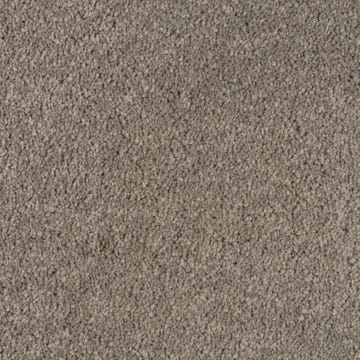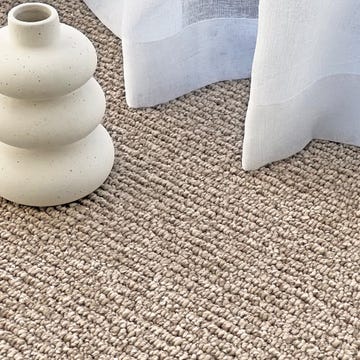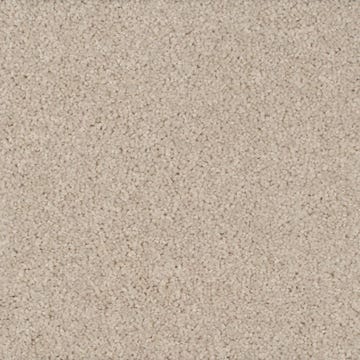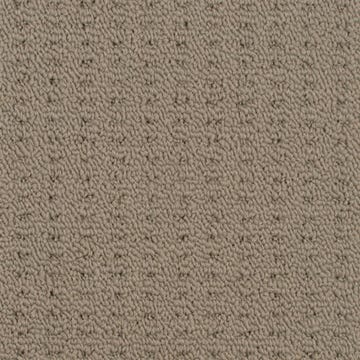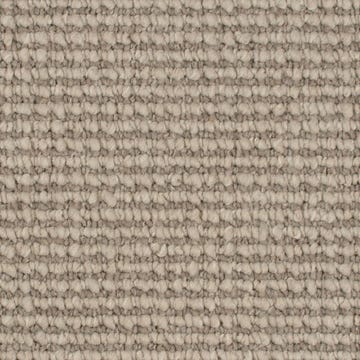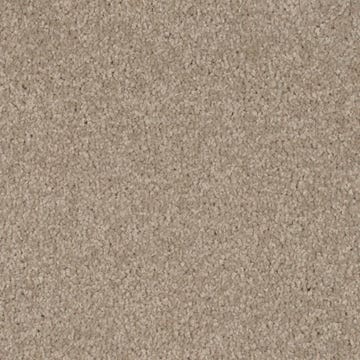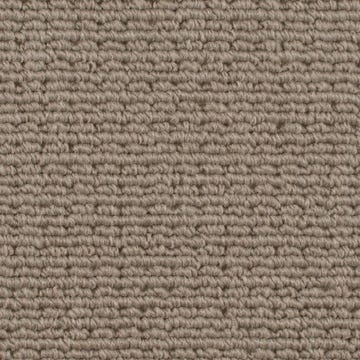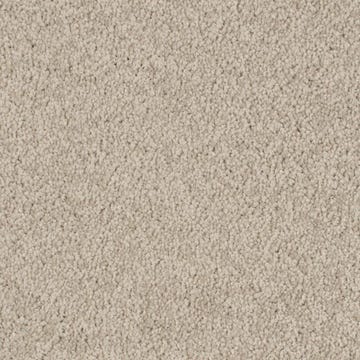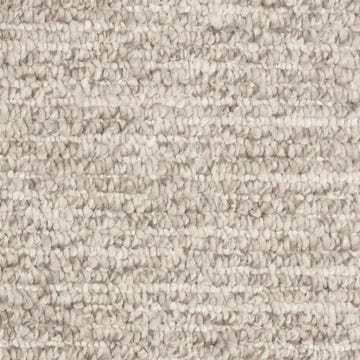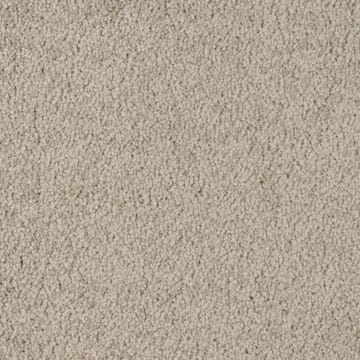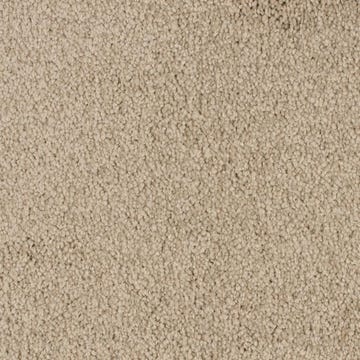
Synthetic
Today’s innovative technology and manufacturing processes have resulted in synthetic carpet fibres which provide an appealing alternative to pure wool carpets. A popular choice in a great number of Australian family homes, synthetic fibres provide sublime softness and comfort underfoot as well as supreme performance, durability and affordability. In fact, with some carpets it can be difficult to tell whether a carpet is wool or synthetic.
What is a synthetic carpet?
Synthetic carpets are a high performing, affordable alternative to wool carpets. Synthetic carpets are manufactured in several different forms:
Solution dyed nylon, also known as SDN, is a colourfast fibre with superior fade and stain resistance and supreme tensile strength. It can withstand the negative effects of crushing such as that which occurs with heavy foot traffic and furniture. SDN is an affordable product for many families who find the cost of pure wool beyond their budget.
Polypropylene is an inexpensive, high performing synthetic carpet popular for use within investment properties and commercial premises. Durable and long-lasting polypropylene has high resistance to moisture and staining. It is easy to clean but it doesn’t rate as highly as other carpet fibres with respect to comfort and style. There are new technologies emerging in polypropylene yarn which are in turn starting to create softer, cut pile polypropylene carpets.
Polyester carpet fibre outperforms nylon and polypropylene in terms of supreme softness and comfort underfoot. Sometimes hard to distinguish from wool, polyester carpet has excellent fade and stain resistance and has the benefit of being less expensive than 100% pure wool but just as visually appealing.
UltraPet fibre has a different molecular structure to polyester (PET) fibre which results in a carpet that has improved elasticity, incredible resiliency and superior softness. This Australian-made product is specifically made for families with pets. It’s stain-resistant for easy cleaning, long-lasting, ultra-soft on paws and feet, retains colour and can handle the wear and tear caused by an active household filled with kids, animals and busy adults.
Triexta is a carpet fiber similar to polyester in many ways. A manufactured biopolymer, Triexta is sourced from renewable natural corn sugar. Due to its combination of natural and synthetic fibres, Triexta is soft underfoot like polyester, while also being highly resistant to wear and tear and fading.
What are the pros and cons of synthetic fibre carpet vs wool carpet?
While the pros and cons of wool vs synthetic carpet used to be obvious, advanced manufacturing techniques make them less so nowadays.
Synthetic carpet fiber can provide many of the benefits and visual beauty of pure wool carpets at a more affordable cost. They have excellent fade and stain resistance, while being hypo-allergenic and easy to clean. They are also anti-static and don’t have the same issues with shedding such as other fiber types.
While most types of synthetic carpets are treated during the manufacturing process to provide supreme soil, mould and stain resistance, wool carpets also display excellent resilience and durability. Their ability to repel soils and liquids comes naturally, from the lanolin substance in sheep’s wool.
Wool is a good insulator and is particularly suited to cold climates, while synthetic carpet performs in the majority of climatic conditions and is outstanding in climates with high humidity. Wool has a naturally soft and luxurious finish, but innovative manufacturing techniques are creating synthetic carpets which are strong competitors in this regard.
How long do synthetic carpets last?
Synthetic carpet fiber is known for its immense strength and high resiliency, meaning it bounces back after being crushed underfoot or compacted by furniture. Synthetic carpet is manufactured with excellent stain resistance capabilities and superior resistance to fading. The combination of these properties mean synthetic wall to wall carpets are a very appealing floor covering, particularly in family homes where wear and tear and stain resistance are necessary qualities for a long-lasting carpet.
They have long been the carpet of choice for use within commercial and rental properties because of their longevity and because they are easy to clean and maintain.
What areas of the house would benefit from synthetic carpet?
The rooms that would benefit from synthetic wall to wall carpet are best determined by your lifestyle, budget and environment. It may be that you choose synthetic wall to wall carpet in your busy family living areas and wool carpets in places where softness, luxury and insulation are important, such as bedrooms. Any of the types of synthetic carpet are ideal for rooms in the house frequented by children, pets or heavy foot traffic such as family rooms, rumpus rooms, hallways and young children’s bedrooms.
For active rooms with floating hardwood floors, synthetic area rugs provide a softening effect in the room while protecting the hardwood floors from scratches, dents and more.

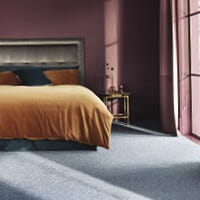
What colours are synthetic carpets available in?
Carpet Court have many types of synthetic carpets and area rugs in a huge range of light, dark, medium and neutral colours sure to enhance any home décor.
Check out the Hideaway Lodge carpet collection, a luxurious synthetic carpet with a hardwearing twist pile available in 20 amazing colours. From the fresh, light shades of Glacier Grey and Albatross through to the dark depths of Dark Shadow, Bluebird and Magma, the Hideaway Lodge collection in the versatile Triexta material has the perfect shade for your home. If light, dark or neutral aren’t your cup of tea, Powder Blue or Bubble Gum will provide some colour, interest and zest to your floors.
Carpet Court new and exclusive ECONYL® carpet collection has a fantastic selection of strong earthy colour tones in a range of twist pile and loop pile carpets designed to cope with the rigours of family life.
For lovers of light, airy spaces the Luxe Tone collection includes some delightful pale shades such as Calcite, Morganite and Moonstone, while offering alternative mid-range colours and darker tones as well.
Are synthetic carpets any good?
Able to withstand dust, dirt, debris, dogs and the daily disasters that are part and parcel of family living, synthetic carpets and area rugs aren’t just good, they are perfect for active family lifestyles.
What is a synthetic carpet?
Synthetic carpets are a high performing, affordable alternative to wool carpets. Synthetic carpets are manufactured in several different forms:
Solution dyed nylon, also known as SDN, is a colourfast fibre with superior fade and stain resistance and supreme tensile strength. It can withstand the negative effects of crushing such as that which occurs with heavy foot traffic and furniture. SDN is an affordable product for many families who find the cost of pure wool beyond their budget.
Polypropylene is an inexpensive, high performing synthetic carpet popular for use within investment properties and commercial premises. Durable and long-lasting polypropylene has high resistance to moisture and staining. It is easy to clean but it doesn’t rate as highly as other carpet fibres with respect to comfort and style.
Polyester carpet fibre outperforms nylon and polypropylene in terms of supreme softness and comfort underfoot. Sometimes hard to distinguish from wool, polyester carpet has excellent fade and stain resistance and has the benefit of being less expensive than 100% pure wool but just as visually appealing.
Triexta is a carpet fiber similar to polyester in many ways. A manufactured biopolymer, Triexta is sourced from renewable natural corn sugar. Due to its combination of natural and synthetic fibres, Triexta is soft underfoot like polyester, while also being highly resistant to wear and tear and fading.
What are the pros and cons of synthetic fibre carpet vs wool carpet?
While the pros and cons of wool vs synthetic carpet used to be obvious, advanced manufacturing techniques make them less so nowadays.
Synthetic carpet fiber can provide many of the benefits and visual beauty of pure wool carpets at a more affordable cost. They have excellent fade and stain resistance, while being hypo-allergenic and easy to clean. They are also anti-static and don’t have the same issues with shedding such as other fiber types.
While most types of synthetic carpets are treated during the manufacturing process to provide supreme soil, mould and stain resistance, wool carpets also display excellent resilience and durability. Their ability to repel soils and liquids comes naturally, from the lanolin substance in sheep’s wool.
Wool is a good insulator and is particularly suited to cold climates, while synthetic carpet performs in the majority of climatic conditions and is outstanding in climates with high humidity. Wool has a naturally soft and luxurious finish, but innovative manufacturing techniques are creating synthetic carpets which are strong competitors in this regard.
How long do synthetic carpets last?
Synthetic carpet fiber is known for its immense strength and high resiliency, meaning it bounces back after being crushed underfoot or compacted by furniture. Synthetic carpet is manufactured with excellent stain resistance capabilities and superior resistance to fading. The combination of these properties mean synthetic wall to wall carpets are a very appealing floor covering, particularly in family homes where wear and tear and stain resistance are necessary qualities for a long-lasting carpet.
They have long been the carpet of choice for use within commercial and rental properties because of their longevity and because they are easy to clean and maintain.
What areas of the house would benefit from synthetic carpet?
The rooms that would benefit from synthetic wall to wall carpet are best determined by your lifestyle, budget and environment. It may be that you choose synthetic wall to wall carpet in your busy family living areas and wool carpets in places where softness, luxury and insulation are important, such as bedrooms. Any of the types of synthetic carpet are ideal for rooms in the house frequented by children, pets or heavy foot traffic such as family rooms, rumpus rooms, hallways and young children’s bedrooms.
For active rooms with floating hardwood floors, synthetic area rugs provide a softening effect in the room while protecting the hardwood floors from scratches, dents and more.
What colours are synthetic carpets available in?
Carpet Court have many types of synthetic carpets and area rugs in a huge range of light, dark, medium and neutral colours sure to enhance any home décor.
Check out the Scenic Rise carpet collection, a luxurious synthetic carpet with a hardwearing twist pile available in nineteen amazing colours. From the fresh, light shades of Bright Day and Alpine Mist through to the dark depths of Boulder, Nightscape and Raincloud, the Scenic Rise collection in the versatile Triexta material has the perfect shade for your home. If light, dark or neutral aren’t your cup of tea, Clear Skies or Tallest Pine will provide some colour, interest and zest to your floors.
Tuftmaster’s Doncaster carpet collection has a fantastic selection of strong earthy colour tones in a twist pile carpet designed to cope with the rigours of family life.
For lovers of light, airy spaces the Mountain Chalet collection includes some delightful pale shades such as Cloud Burst, Glacial, Morning Light and Morning Mist, while offering alternative mid-range colours and darker tones as well.
Are synthetic carpets any good?
Able to withstand dust, dirt, debris, dogs and the daily disasters that are part and parcel of family living, synthetic carpets and area rugs aren’t just good, they are perfect for active family lifestyles.
